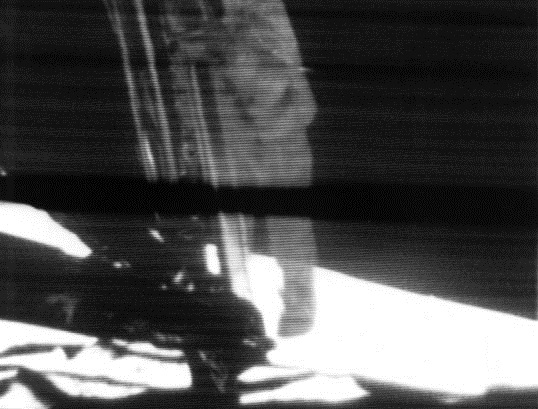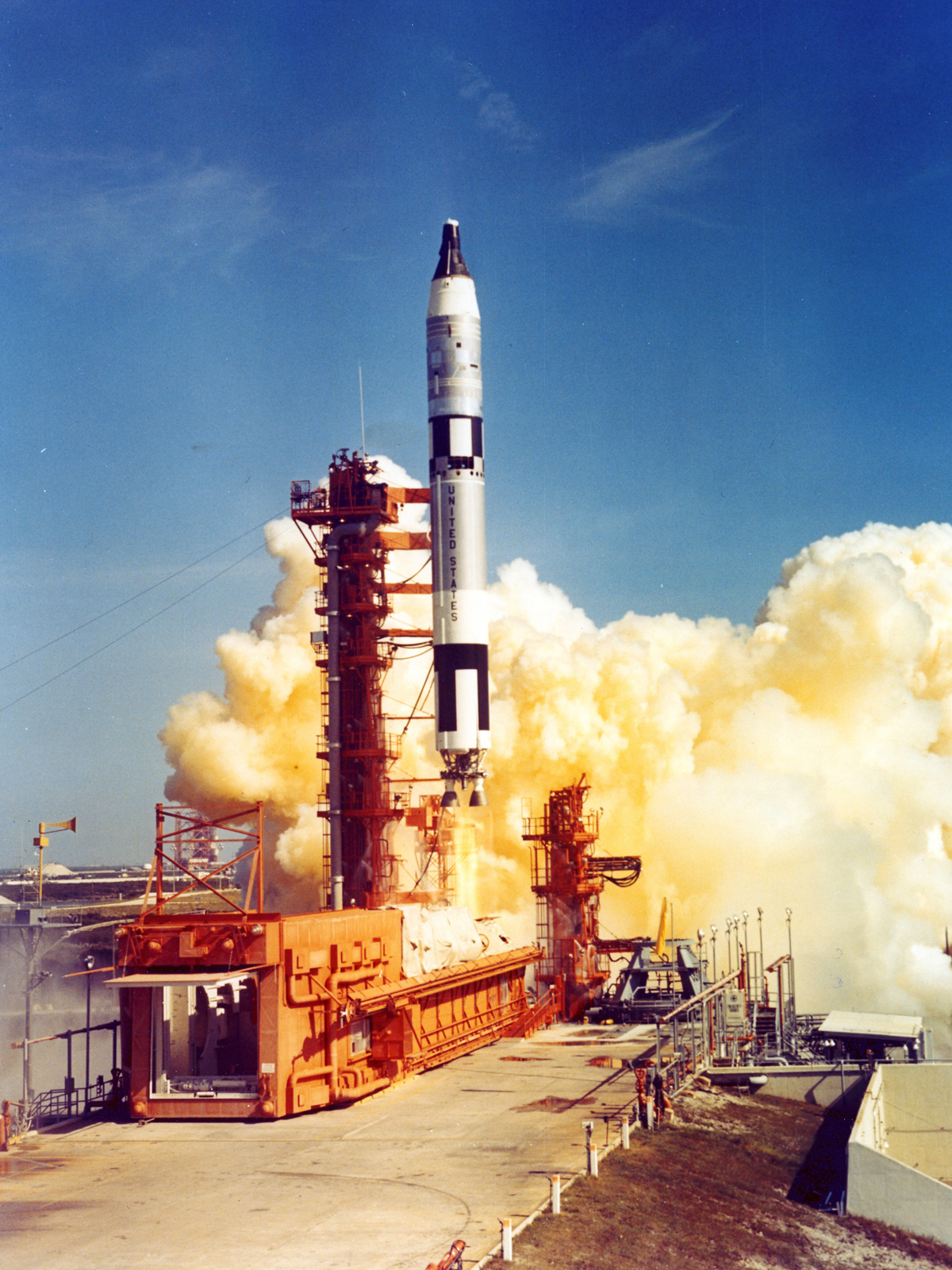
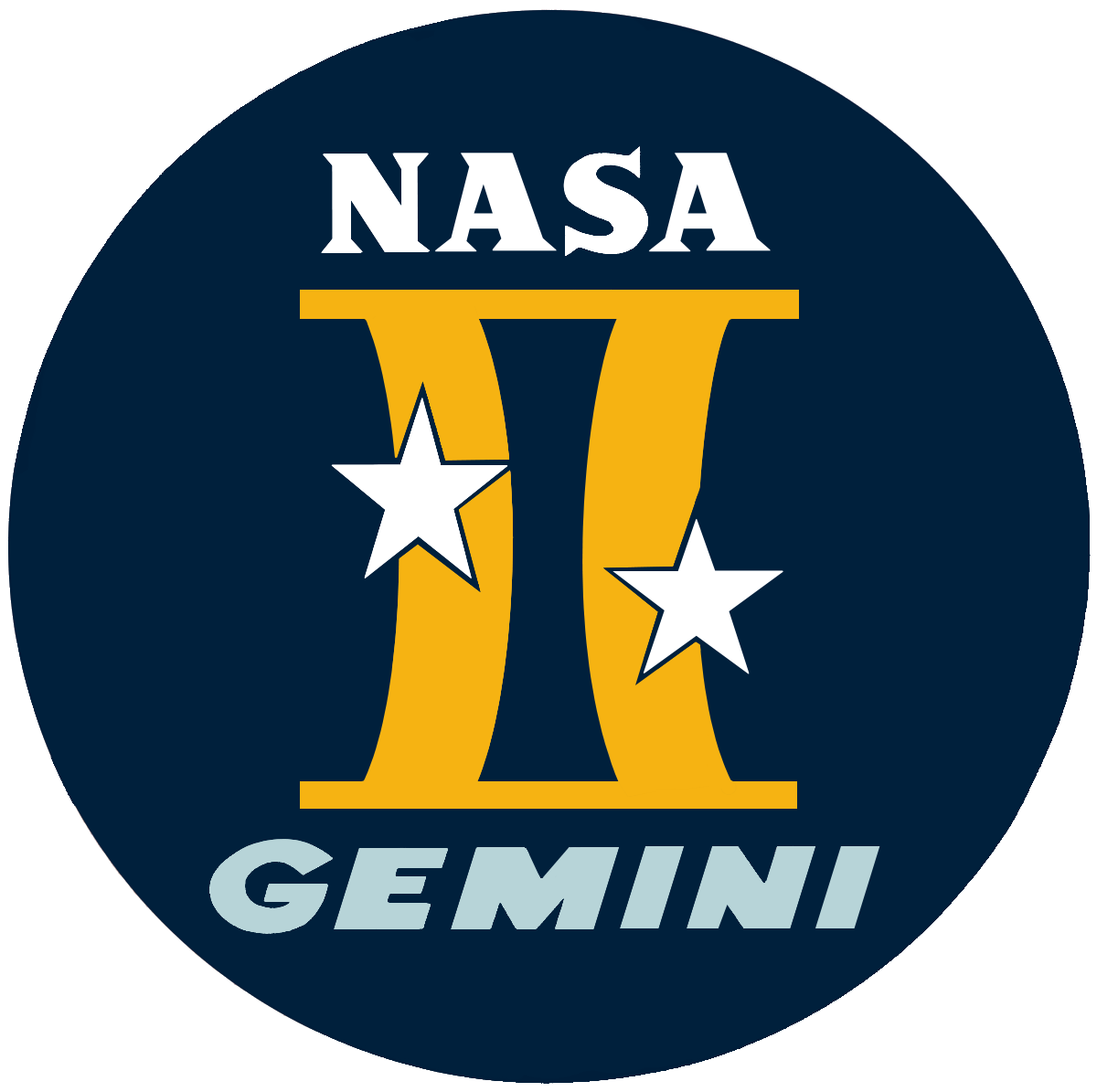 16 March 1966: At 16:41:02.389 UTC (12:41:02 p.m. Eastern Standard Time), forty years to the day after the launch of Dr. Robert Goddard’s first liquid-fueled rocket, Gemini VIII, with command pilot Neil Alden Armstrong and pilot David Randolph Scott, lifted off from Launch Complex 19 at the Cape Kennedy Air Force Station, Cape Kennedy, Florida, aboard a Titan II GLV booster. Their mission was to rendezvous and dock with an Agena Target Vehicle launched earlier aboard an Atlas rocket.
16 March 1966: At 16:41:02.389 UTC (12:41:02 p.m. Eastern Standard Time), forty years to the day after the launch of Dr. Robert Goddard’s first liquid-fueled rocket, Gemini VIII, with command pilot Neil Alden Armstrong and pilot David Randolph Scott, lifted off from Launch Complex 19 at the Cape Kennedy Air Force Station, Cape Kennedy, Florida, aboard a Titan II GLV booster. Their mission was to rendezvous and dock with an Agena Target Vehicle launched earlier aboard an Atlas rocket.
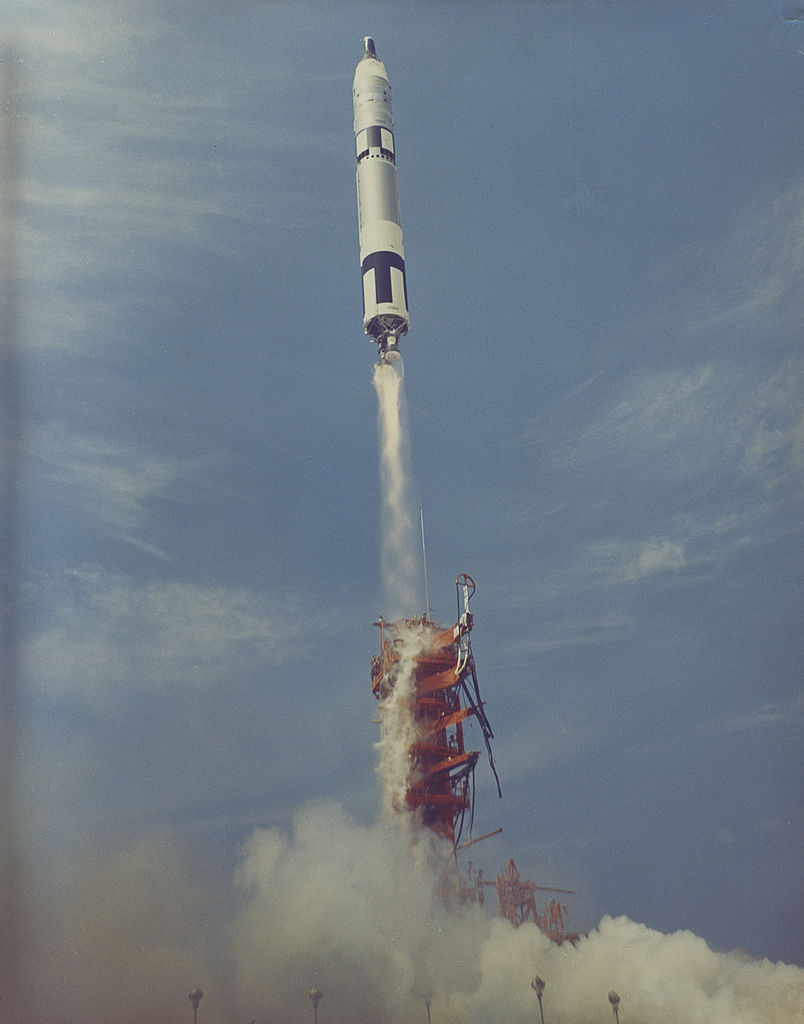
Gemini VIII entered a 86.3 × 146.7 nautical mile (99.3 × 168.8 statute miles/160 × 271.7 kilometers) elliptical orbit. The spacecraft was traveling at 17,549 miles per hour (28,242 kilometers per hour).
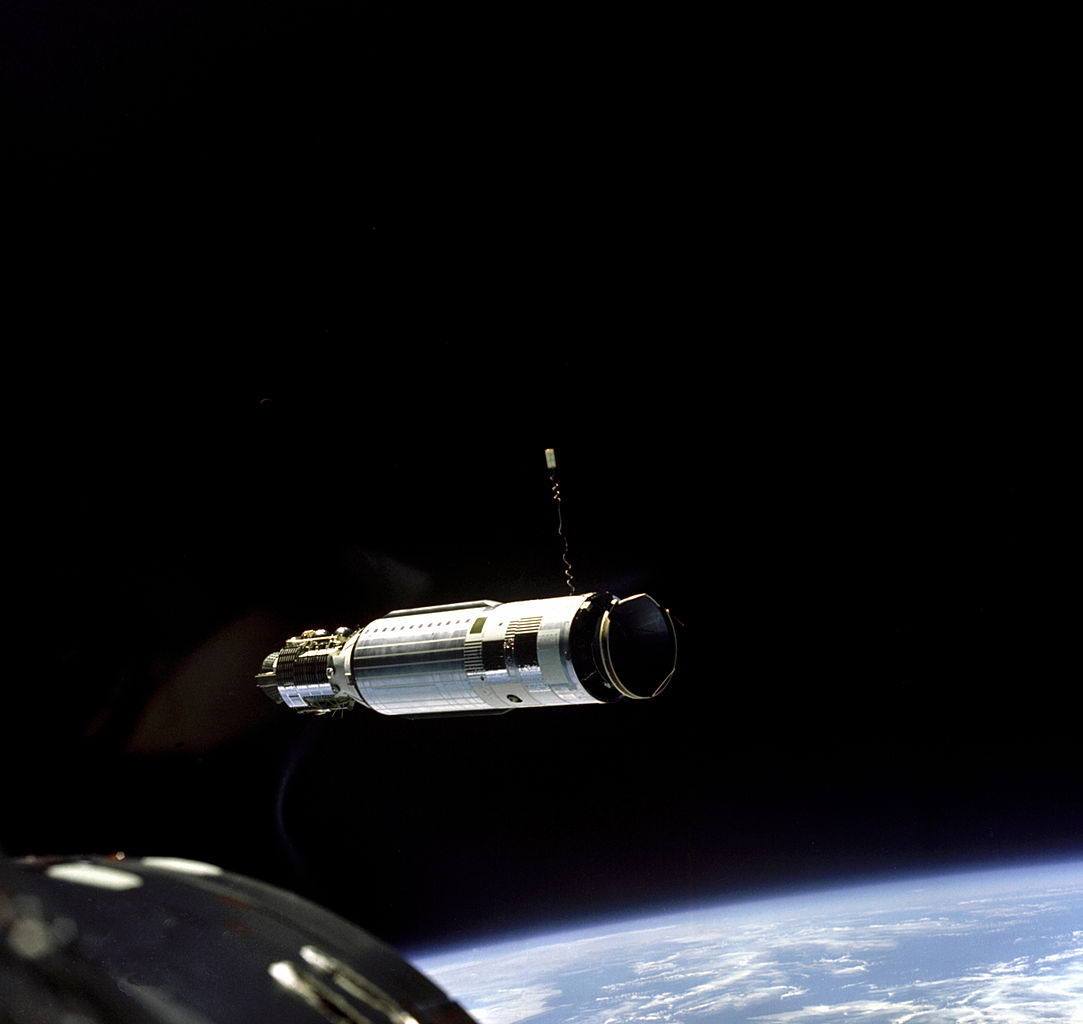
The docking, the first ever of two vehicles in Earth orbit, was successful, however after about 27 minutes the combined vehicles begin rolling uncontrollably. The Gemini capsule separated from the Agena, and for a few minutes all seemed normal. But the rolling started again, reaching as high as 60 r.p.m.
The astronauts were in grave danger. Armstrong succeeded in stopping the roll but the Gemini’s attitude control fuel was dangerously low.
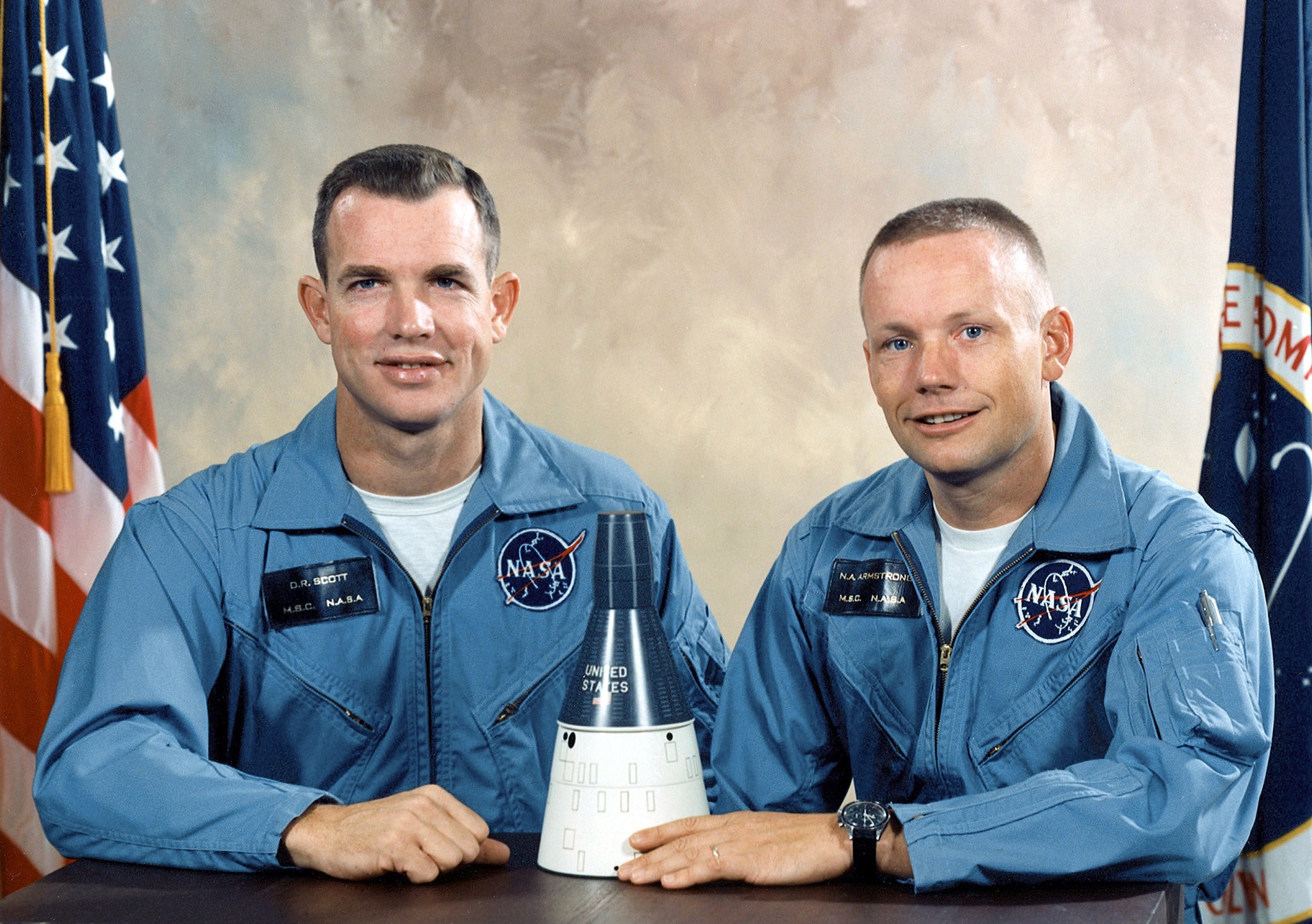
The pilots’ report reads:
Shortly after sending encoder command 041 (recorder ON), roll and yaw rates were observed to be developing. No visual or audible evidence of spacecraft thruster firing was noted, and the divergence was attributed to the GATV.
Commands were sent to de-energize the GATV ACS, geocentric rate, and horizon sensors, and the spacecraft Orbital Attitude and Maneuver System (OAMS) was activated.
The rates were reduced to near zero, but began to increase upon release of the hand controller. The ACS was commanded on to determine if GATV thruster action would help reduce the angular rates. No improvement was noted and the ACS was again commanded off. Plumes from a GATV pitch thruster were visually observed, however, during a period when the ACS was thought to be inactivated.
After a period of relatively stable operation, the rates once again began to increase. The spacecraft was switched to secondary bias power, secondary logics, and secondary drivers in an attempt to eliminate possible spacecraft control-system discrepancies. No improvement being observed, a conventional troubleshooting approach with the OAMS completely de-energized was attempted, but subsequently abandoned because of the existing rates.
An undocking was performed when the rates were determined to be low enough to precluded any recontact problems. Approximately a 3 ft/sec velocity change was used to effect separation of the two vehicles.
Angular rates continued to rise, verifying a spacecraft control-system problem. The hand controller appeared to be inactive. The Reentry Control System (RCS) was armed and, after trying ACME-DIRECT and then turning off all OAMS control switches and circuit breakers, was found to be operative in DIRECT-DIRECT. Angular rates were reduced to small values with the RCS B-ring. Inspection of the OAMS revealed that the no. 8 thruster had failed to open. Some open Attitude Control and Maneuver Electronics (ACME) circuit breakers probably accounted for the inoperative hand controller noted earlier. All yaw thrusters other than number 8 were inoperative. Pitch and roll control were maintained using the pitch thrusters. . .
All four retrorockets fired on time. . . .
—GEMINI PROGRAM MISSION REPORT, GEMINI VIII, Gemini Mission Evaluation Team, National Aeronautics and Space Administration, Manned Spacecraft Center, Houston, Texas, , MSC-G-R-66-4, Section 7 at Pages 7-21 and 7-22
The mission was aborted and the capsule returned to Earth after 10 hours, 41 minutes, 26.0 seconds, landing in the Pacific Ocean at N. 25° 12′, E. 136° 05′. U.S. Air Force pararescue jumpers (“PJs”) parachuted from a Douglas C-54 transport and attached a flotation collar to the Gemini capsule. The astronauts were recovered by the Gearing-class destroyer USS Leonard F. Mason (DD-852), about three hours later..
The Gemini VIII spacecraft is displayed at the Neil Armstrong Air and Space Museum, Wapakoneta, Ohio.
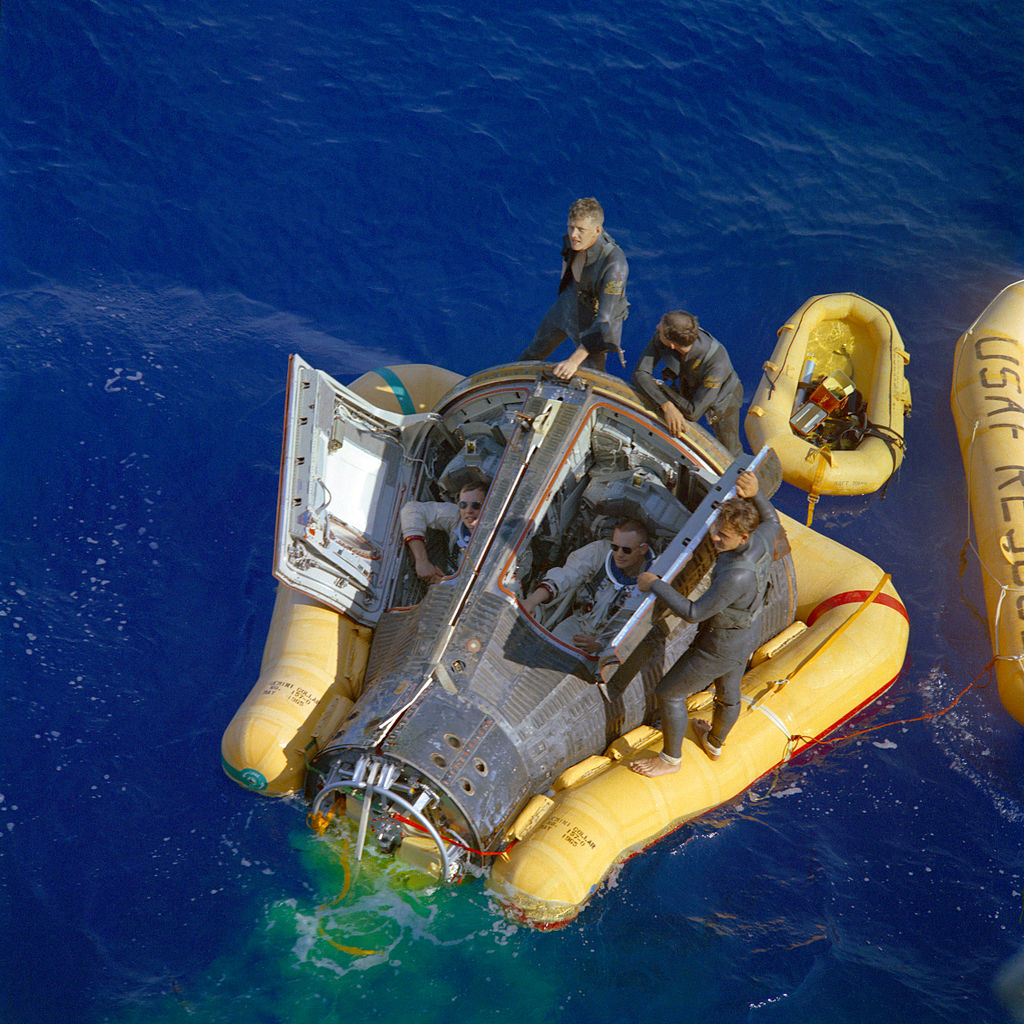
![]() The two-man Gemini spacecraft was built by the McDonnell Aircraft Corporation of St. Louis, Missouri, the same company that built the earlier Mercury space capsule. The spacecraft consisted of a series of cone-shaped segments forming a reentry module and an adapter section. It had an overall length of 18 feet, 9.84 inches (5.736 meters) and a maximum diameter of 10 feet, 0.00 inches (3.048 meters) at the base of the equipment section. The reentry module was 11 feet (3.353 meters) long with a maximum diameter of 7 feet, 6.00 inches (2.347 meters). The Gemini re-entry heat shield was a spherical section with a radius of 12 feet, 0.00 inches (3.658 meters). The weight of the Gemini spacecraft varied from ship to ship. Gemini VIII weighed 8,351.31 pounds (3,788.09 kilograms) at launch. Spacecraft 8 was shipped from the St. Louis factory to Cape Kennedy on 2 January 1966.
The two-man Gemini spacecraft was built by the McDonnell Aircraft Corporation of St. Louis, Missouri, the same company that built the earlier Mercury space capsule. The spacecraft consisted of a series of cone-shaped segments forming a reentry module and an adapter section. It had an overall length of 18 feet, 9.84 inches (5.736 meters) and a maximum diameter of 10 feet, 0.00 inches (3.048 meters) at the base of the equipment section. The reentry module was 11 feet (3.353 meters) long with a maximum diameter of 7 feet, 6.00 inches (2.347 meters). The Gemini re-entry heat shield was a spherical section with a radius of 12 feet, 0.00 inches (3.658 meters). The weight of the Gemini spacecraft varied from ship to ship. Gemini VIII weighed 8,351.31 pounds (3,788.09 kilograms) at launch. Spacecraft 8 was shipped from the St. Louis factory to Cape Kennedy on 2 January 1966.
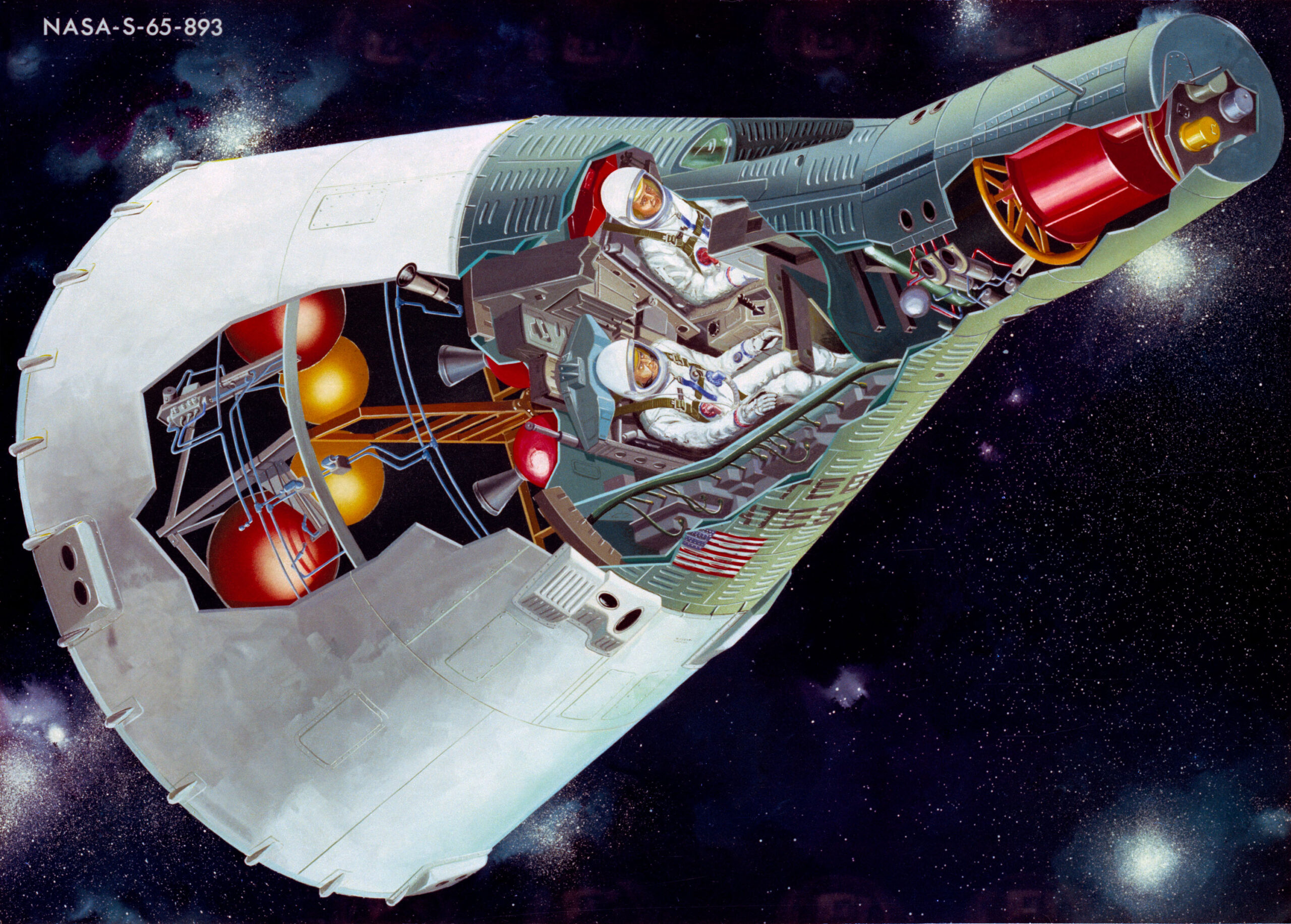
![]() The Titan II GLV was a “man-rated” variant of the Martin SM-68B intercontinental ballistic missile. It was assembled at Martin’s Middle River, Maryland plant so as not to interfere with the production of the ICBM at Denver, Colorado. Twelve GLVs were ordered by the Air Force for the Gemini Program.
The Titan II GLV was a “man-rated” variant of the Martin SM-68B intercontinental ballistic missile. It was assembled at Martin’s Middle River, Maryland plant so as not to interfere with the production of the ICBM at Denver, Colorado. Twelve GLVs were ordered by the Air Force for the Gemini Program.
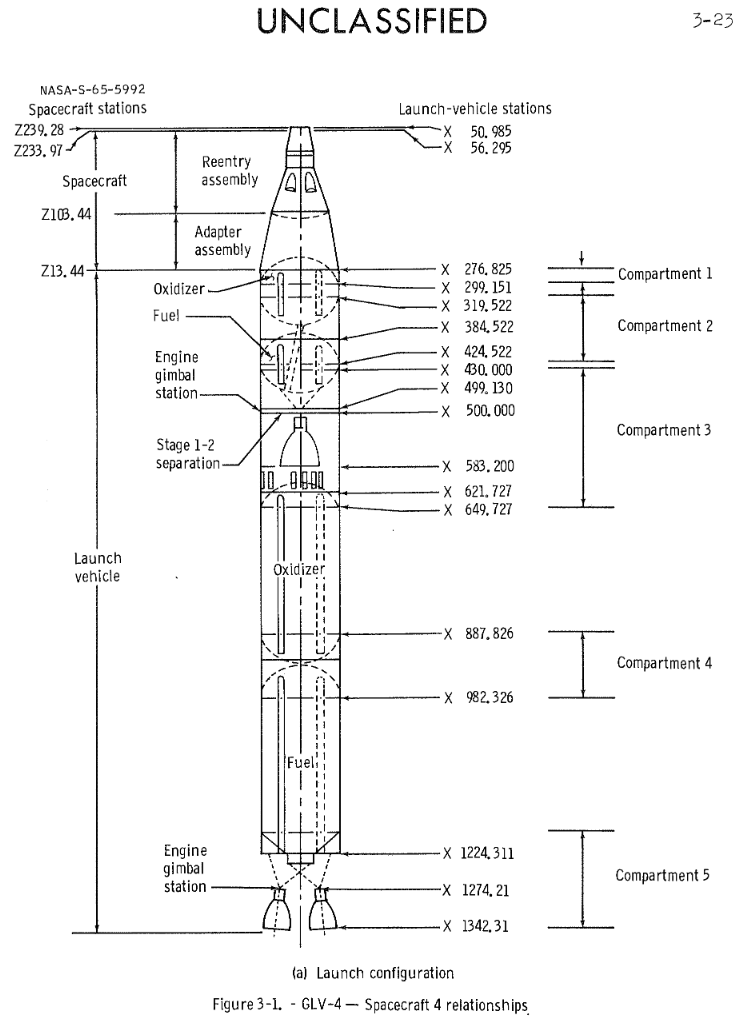
The Titan II GLV was a two-stage, liquid-fueled rocket. The first stage was 70 feet, 2.31 inches (21.395 meters) long with a diameter of 10 feet (3.048 meters). It was powered by an Aerojet Engineering Corporation LR87-7 engine which combined two combustion chambers and exhaust nozzles with a single turbopump unit. The engine was fueled by Aerozine 50, a hypergolic 51/47/2 blend of hydrazine, unsymetrical-dimethyl hydrazine, and water. Ignition occurred spontaneously as the components were combined in the combustion chambers. The LR87-7 produced approximately 430,000 pounds of thrust (1,912.74 kilonewtons). It was not throttled and could not be shut down and restarted. Post flight analysis indicated that the first stage engine of GLV-8 had produced an average of 461,080 pounds of thrust ( kilonewtons).
The second stage was 25 feet, 6.375 inches (7.782 meters) long, with the same diameter, and used an Aerojet LR91 engine which produced approximately 100,000 pounds of thrust (444.82 kilonewtons), also burning Aerozine 50. GLV-7’s LR91 produced an average of 102,735 pounds of thrust ( kilonewtons).
The Gemini/Titan II GLV VIII combination had a total height of 107 feet, 7.33 inches (32.795 meters) and weighed 345,359 pounds (156,652 kilograms) at ignition.
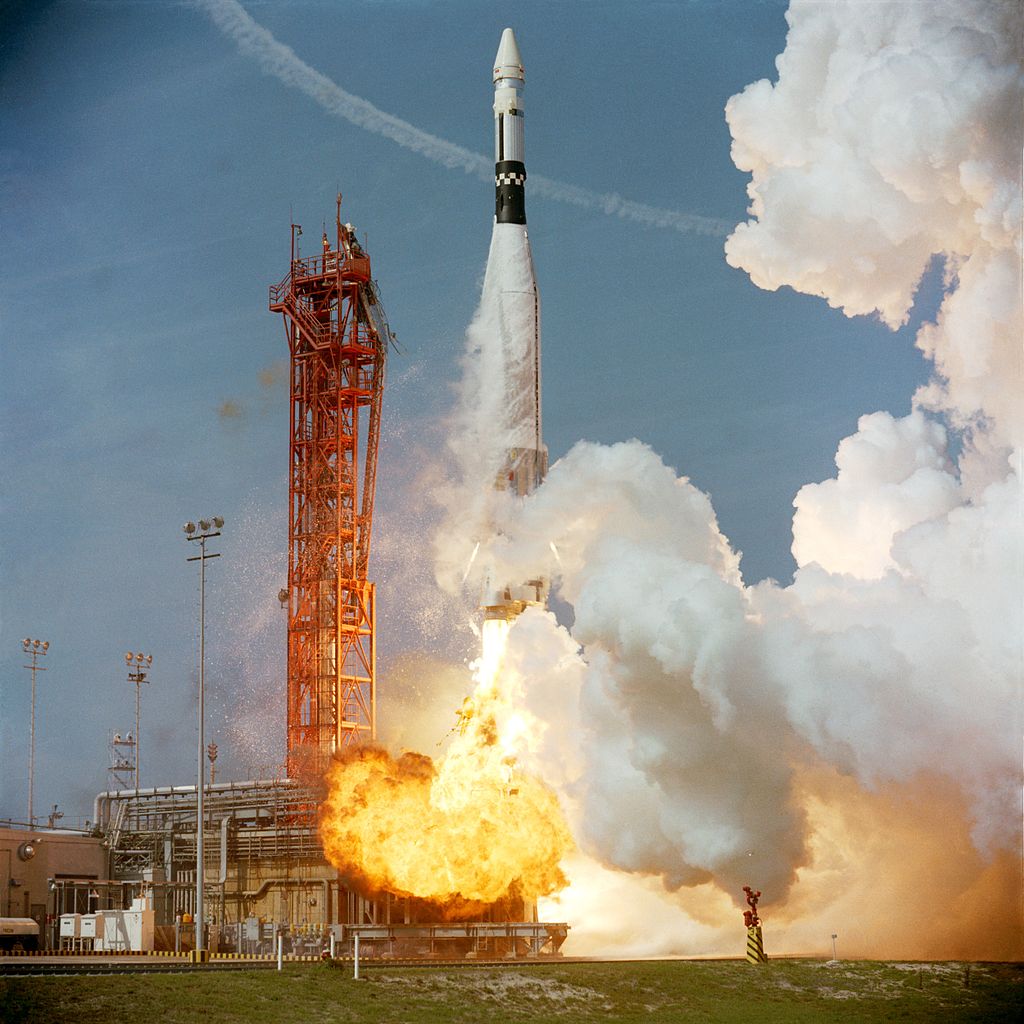
© 2019, Bryan R. Swopes

